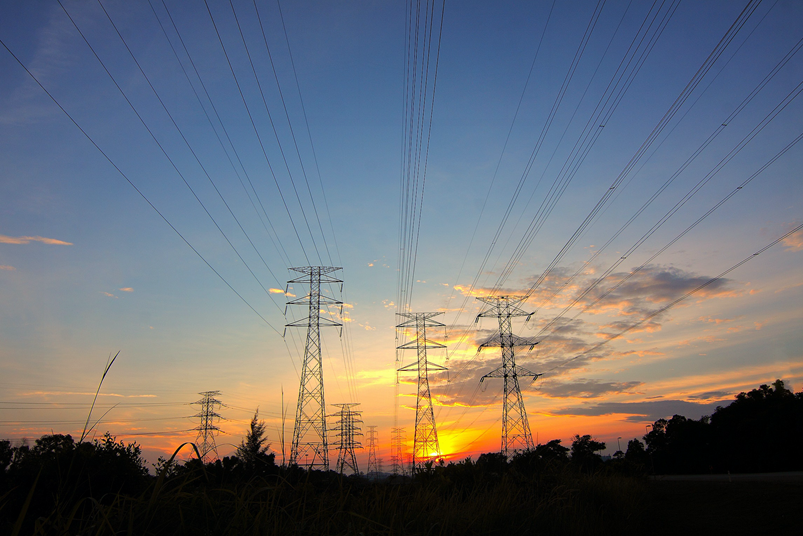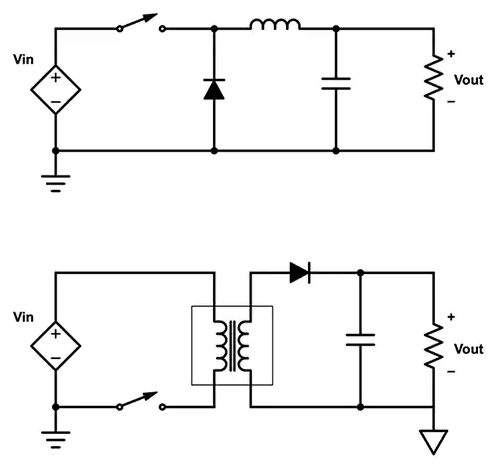albisteak
Design and Analysis of Bidirectional DC-DC Converter for Efficient Power Conversion
Egilea: ZYG Power Module Time: 2023-6-26
In modern power systems, the use of renewable energy sources and energy storage systems has increased significantly. The integration of these sources into the grid has resulted in the need for efficient power conversion solutions. Bidirectional DC-DC converters are an essential component in power systems that facilitate the efficient transfer of power between different DC sources and energy storage systems. In this article, we will explore the design and analysis of a bidirectional DC-DC converter for efficient power conversion.
Design of Bidirectional DC-DC Converter
The bidirectional DC-DC converter is used to transfer power between two DC sources, which can be a battery and a grid or two different batteries. The converter consists of four power switches, two inductors, two capacitors, and a control circuit. The circuit topology used in the converter is a full-bridge, which is commonly used for bidirectional power conversion.
The design of the converter involves selecting the values of the components such that they meet the specifications of the power system. The switching frequency of the converter is one of the critical parameters that affect the performance of the system. A higher switching frequency leads to reduced size and weight of the components but increases the switching losses. Hence, the switching frequency is selected based on a trade-off between efficiency and size.
The selection of the inductance and capacitance values is another critical aspect of the design. The inductors are used to store and transfer energy, while the capacitors are used to filter out the high-frequency components of the output voltage. The inductance value is selected such that it provides enough energy storage and reduces the ripple in the output voltage. The capacitance value is chosen based on the required output voltage ripple and the switching frequency.
Analysis of Bidirectional DC-DC Converter
The analysis of the bidirectional DC-DC converter involves determining the efficiency, voltage and current ripple, and the transient response of the system. The efficiency of the converter is affected by the conduction and switching losses of the power switches, the resistance of the inductors and capacitors, and the magnetic core losses of the inductors. The efficiency can be improved by selecting high-performance power switches, reducing the resistance of the components, and optimizing the magnetic core design.
The voltage and current ripple in the output of the converter are undesirable and can cause issues with the performance of the downstream system. The ripple can be reduced by selecting appropriate filter components and optimizing the control algorithm of the converter. The transient response of the converter is the time taken by the system to respond to a change in the input or output voltage. The transient response can be improved by selecting appropriate values of the inductance and capacitance and by optimizing the control algorithm.

Conclusion
In conclusion, bidirectional DC-DC converters are an essential component in power systems that facilitate the efficient transfer of power between different DC sources and energy storage systems. The design and analysis of the converter involve selecting appropriate values of the components and optimizing the control algorithm to meet the specifications of the power system. The efficiency, voltage and current ripple, and the transient response are critical parameters that affect the performance of the converter. Proper design and analysis can lead to a highly efficient and reliable bidirectional DC-DC converter for efficient power conversion.
Aurrekoa: Medical Power Series: Empowering Healthcare Professionals and Patients for Better Health
Hurrengoa: 24V AC to DC Converter: Efficiently Transforming Alternating Current to Direct Current
informazio garrantzitsua
-
2023-7-15
China AC to DC Converter for LED – 12V Power Conversion Solution
Introduction: In today's world, LED technology has become increasingly popular due to its numerous advantages over traditional lighting options. LED lights are energy-efficient, long-lasting, and environmentally friendly. However, they require direct current (DC) power to operate, while the power supply in most households and buildings is alternating current (AC). To bridge this gap, an AC to DC converter is used to convert the AC power into DC power, allowing for seamless operation of LED lights. In this article, we will discuss the importance and functionality of an AC to DC converter for LED lights and explore its application in 12V power conversion solutions. Importance of AC to DC Converter for LED lights: LED lights offer significant advantages, including high energy...
Ikusi xehetasunak -
2023-5-2
Industrial AC-DC Converter for Efficient Power Conversion
Industrial AC-DC converters are devices that convert alternating current (AC) to direct current (DC) for use in industrial applications. They are designed to provide efficient power conversion, enabling industrial equipment to operate reliably and efficiently. These converters are typically used in industrial processes such as manufacturing, automation and control systems, and power distribution systems. The primary function of an AC-DC converter is to convert the voltage and frequency of incoming AC power to the appropriate DC voltage required by the equipment. This requires a complex circuitry that includes a rectifier, filter, and voltage regulator. The rectifier converts the AC voltage to DC while the filter smoothes out the output voltage, and the voltage regulator ensures the output voltage is maintained...
Ikusi xehetasunak -
2023-5-2
AC-DC bihurgailuaren modulua: potentzia bihurtzeko irtenbide eraginkorra
Introduction The AC-DC converter module is a circuit board that converts alternating current (AC) to direct current (DC) in a power supply system. It is an essential component for many electronic devices and systems that require a stable and regulated DC voltage. The AC-DC converter module is designed to be highly efficient, reliable, and cost-effective for use in a variety of applications. Efficient Power Conversion Solution The AC-DC converter module provides an efficient power conversion solution compared to traditional linear power supplies. Linear power supplies use a transformer to step down the voltage and then regulate the output voltage using a linear regulator. This method is inefficient and produces a lot of heat, resulting in a lower power efficiency. On...
Ikusi xehetasunak -
2022-9-2
Txinako DC-DC bihurgailuen fabrikatzaile onenak, lortu zure boterea behar duzun tokian!
DC-DC bihurgailuak bateria edo beste energia iturri batetik korronte zuzena (DC) beste tentsio maila batera bihurtzeko erabiltzen dira. DC-DC bihurgailua tentsio maila bat beste batera bihurtzeko kommutazio-gailuak erabiltzen dituen zirkuitu elektroniko bat da. DC-DC bihurgailuak irteerako tentsio eta potentzia desberdinetan daude eskuragarri. Bihurgailu batzuk tentsio zehatz bat emateko diseinatuta daude, eta beste batzuk, berriz, erregulagarriak dira erabiltzaileak nahi duen irteerako tentsioa hautatzeko. Txinako DC-DC bihurgailuen fabrikatzaileak kalitate handiena, prezio lehiakorrenak eta produktu sorta osatuena dituzten munduko hornitzaile nagusiak dira. Fabrikatzaile hauek eskaintzen dituzten produktuak kalitate fidagarriak eta arrazoizko prezioak dira, bezeroen behar anitzak ase ditzaketenak. Oso erabilia...
Ikusi xehetasunak -
2023-6-3
120V AC to 12V DC Converter: Transforming Voltage for Optimal Power Usage
A 120V AC to 12V DC converter is a crucial device in the world of electronics. It is used to transform high-voltage alternating current (AC) into low-voltage direct current (DC), which is required for the optimal functioning of various electronic devices. The converter is an essential component in many electronic systems, including computers, televisions, and automobiles, to name a few. The 120V AC to 12V DC converter plays a critical role in converting the power source from the mains electricity into a form that is compatible with electronic devices. This is because most electronic devices operate on DC power, whereas the electricity that is supplied to homes and buildings is typically AC power. The converter is used to bridge the...
Ikusi xehetasunak -
2023-6-9
Unleashing the Power of Bidirectional Converters: Revolutionizing Language Translation in English
Language translation has been a crucial tool for communication and understanding in our globalized world. However, it is not without its challenges. One of the significant obstacles is the difficulty in accurately translating languages that are structurally different from each other, such as English and languages that use non-Latin scripts. In recent years, bidirectional converters have emerged as a game-changer in language translation, particularly in English. Bidirectional converters are computer programs that can convert text in one script to another script and vice versa. These converters have been developed to handle complex scripts such as Arabic, Hebrew, and Indic scripts, among others. They can accurately convert text while preserving the original meaning and tone of the message. The use of...
Ikusi xehetasunak


















